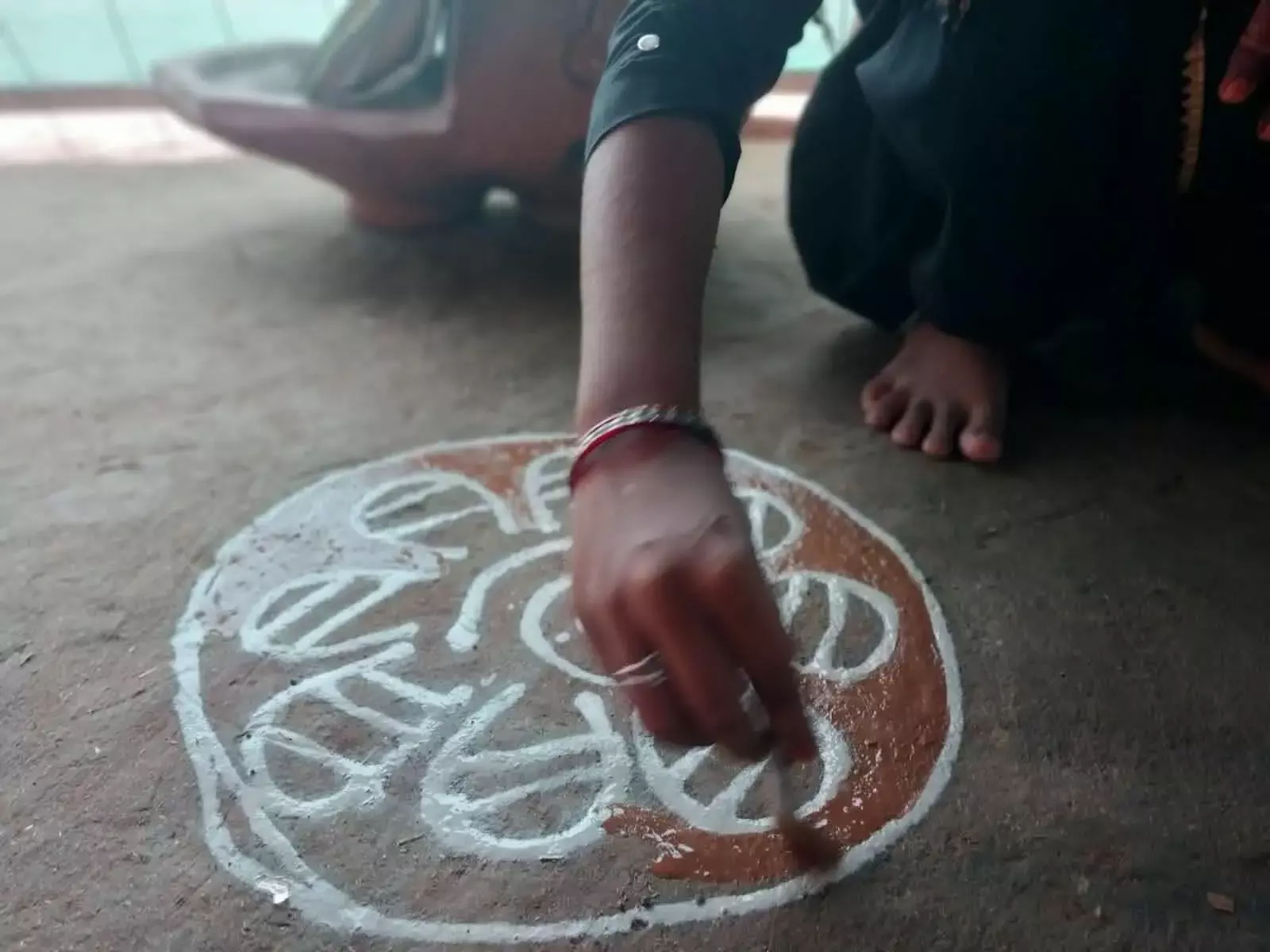
As the distance decreased, my somewhat sagging spirit lifted. The destination was Sawai Madhopur, famous for the Ranthambore Tiger Reserve. But it wasn’t tigers that made me undertake the jaunty almost five hour bus ride from Alwar. It was art.
Through the bus window I clicked a flock of sheep and a woman in an orange saree riding pillion. I had a tough time keeping my scarf from being blown away.
Once inside the city, a tiger stared at me. It looked cute and surprised, etched in white on a reddish wall. There were other images too in a line; peacocks, lotus, birds and even an elephant.
In this tiger land of Rajasthan, the wall art of Mandana is a feast for the eyes. Once limited to the Meena Adivasi community, it has now spread amongst others and transformed over time.
These murals on mud walls reflect the primeval connection of human beings with nature and celebrate a lifestyle close to earth.
Once on a hot afternoon, I felt refreshed inside a mud house in a Gond village. Without even a fan, I sat almost for two hours talking to its occupants. Mud walls ward off the heat even in peak summer.
Traditional Mandana painting is executed with white chalk soaked in water on reddish mud walls. It is primarily women who are at it. As coloured chalks are now available, I saw murals in pink, green and even red in Bandha.
Construction of concrete houses is taking its toll on the age-old tradition of Mandana. At an abandoned house in Bandha, my guide Dhulilal Meena showed me beautiful patterns made on the mud floors. The family has shifted to a pucca house, but the women return around Diwali to make the murals in white, he said. Mandana designs can also be seen on the chulhas.
As I gazed on a wall and the dense undergrowth below it, Dhulilal Meena said “Madam, you must return around Diwali. I will put you in touch with the women who will paint the walls at this time. It will be a great learning experience.”
Back home from school, young Shabnam Bano joined me in Bandha. After I requested her to paint a Mandana design, she created a circular one on the floor with a brush.
Mandana art is on the decline. Divya Khandal, who runs the social enterprise Dhonk based in Ranthambore, said once widespread in the region, the traditional art is slowly diminishing. Modern influences have also crept in, bringing changes.
In many houses, I saw murals that had been painted during weddings, with images of horses and processions thrown in a great deal. Dhulilal Meena said that many prefer these over Mandana nowadays. With the art under threat at present, Divya Khandal said she does outreach programs from time to time. Once she covered more than 50 government schools to engage with students in the art form.
Ramdev Meena, an assistant professor who teaches painting at the Government College in Itawa, Kota, said that Mandana art can be colourful too apart from the white murals on mud walls. Even the black colour is used in Mandana.
“I was the only brother among my five sisters. So, I also started painting Mandana. Today the art is on the decline due to social disintegration and the disappearance of mud walls in villages,” the professor said.
Mandana is also made in the form of relief work which can be touched and felt. In this form, an elephant was seen on a wall in Bandha. Ramdev Meena said the depiction of the peacock and tiger is the most important in this art form, especially the former. “The peacock is never harmed by the Meena community.”
Specific regional art forms point to the deep tradition of indigenous communities attached to a place for centuries, even millennia. To sever their connection in the name of development would not only impact tourism, but also kill art. India will lose its cultural heritage.
Many traditional tribal art forms have descended to paper and canvas in modern times. The artist Jeetram Meena from Dausa said that he is experimenting with Mandana on canvas. “In the old days, women used their fingers to draw the murals on mud walls. Now that brushes have come, the art has become a bit different.”.
He paints whatever comes to mind. He has painted inside houses, hotels and restaurants. Elderly women are the best at Mandana, he pointed out.
Photographs Deepanwita Gita Niyogi

